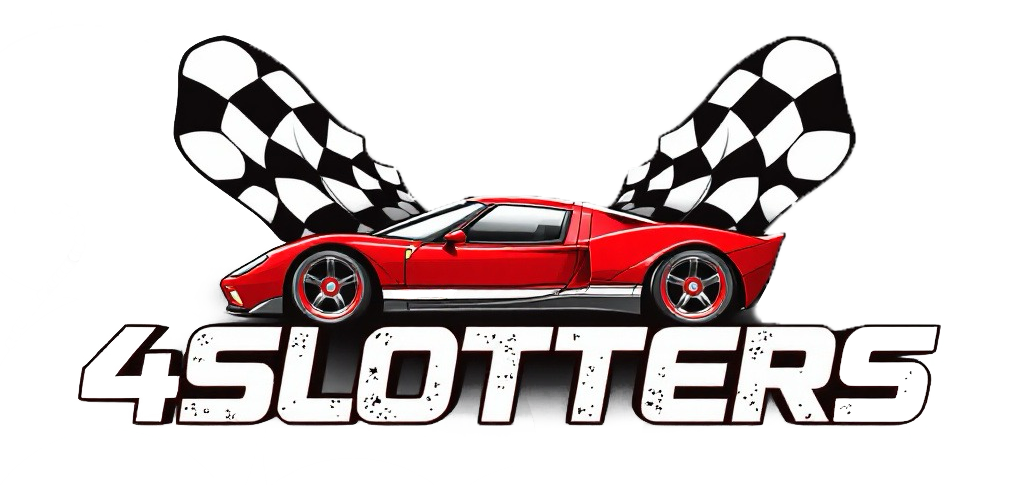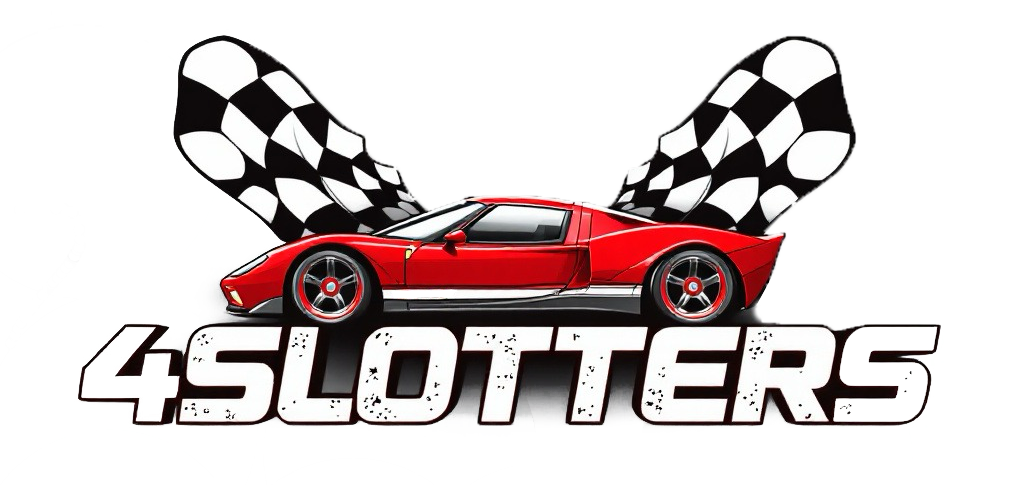One of the biggest decisions slot car enthusiasts face is choosing between digital and analog racing systems. Both technologies offer unique advantages and limitations that can significantly impact your racing experience. This comprehensive guide explores the differences between digital and analog slot car systems, helping you make an informed decision based on your preferences, budget, and racing goals.
Analog slot car systems are the traditional format that has been around since the hobby's inception in the 1950s and 1960s. In an analog system:
- Each lane on the track is powered independently
- Each controller directly controls the voltage to its specific lane
- One car per lane at all times
- Cars are restricted to staying in their designated lane
- Simple electrical circuits with no digital chips or processors
Analog systems work by applying variable voltage to the track lanes. When you squeeze the controller trigger, more electricity flows to the track, increasing the car's speed. Each lane operates as a separate circuit, which is why cars can't change lanes in analog systems.
Digital slot car systems represent the evolution of the hobby, introduced in the early 2000s. These modern systems feature:
- Multiple cars can run on the same lane
- Lane-changing capability at designated track sections
- Individual car addressing and control
- Digital chips inside each car
- Computerized control units managing the system
- Advanced features like fuel simulation and ghost cars
Digital systems work using digital signals encoded in the track power. Each car has a chip that recognizes commands intended specifically for it, allowing independent control of multiple vehicles sharing the same track sections. Special track pieces enable cars to change lanes at designated points.
-
Simplicity
- Easier to understand, set up, and operate
- Fewer components that can malfunction
- No programming or digital configuration required
- Straightforward troubleshooting
-
Lower cost
- Less expensive track components
- More affordable starter sets
- Lower-priced cars without digital chips
- More budget-friendly expansion options
-
Compatibility
- Works with virtually any slot car from any era
- Mix and match cars from different manufacturers
- No need for chip installation or conversion
- Broader selection of available cars
-
Racing purity
- Focus on driving skill rather than lane strategy
- Consistent performance without digital artifacts
- No electronic complexity between driver and car
- Maintains traditional racing experience
-
Lane restrictions
- Cars must stay in their designated lane
- No overtaking except by outperforming in your lane
- Limited racing strategy options
- Less realistic racing scenarios
-
Player limitations
- Number of racers limited to number of lanes (typically 2-6)
- Cannot accommodate larger racing groups without taking turns
- Each lane requires its own controller
-
Fewer features
- No advanced race management features
- Limited options for race customization
- No fuel simulation or pit stops
- Simpler racing experience overall
-
Track design limitations
- Need for parallel lanes throughout the layout
- Cannot create single-lane sections
- Less flexible in layout design possibilities
Analog systems remain popular with many enthusiasts for their simplicity, reliability, and focus on pure racing skill. They're excellent for beginners, racers on a budget, or those who appreciate a more traditional slot car experience. Browse our selection of analog slot car sets to get started.
-
Lane changing capability
- Cars can switch lanes at designated points
- Enables realistic overtaking maneuvers
- Creates dynamic racing strategies
- Adds an entirely new dimension to racing
-
Multiple cars per lane
- Run more cars than you have lanes
- Typical systems support 6-8 cars on a two-lane track
- Accommodate more racers simultaneously
- Create more realistic racing grids
-
Advanced features
- Fuel simulation and pit stop strategies
- Ghost car and pace car functions
- Race management systems with lap counting
- Programmable car characteristics
- Different racing modes and scenarios
-
More realistic racing
- Closer approximation to real motorsport strategy
- Defensive and offensive driving techniques
- More engaging multi-player experience
- Greater long-term variety in racing scenarios
-
Layout flexibility
- Create single-lane sections
- Design more compact and interesting layouts
- Implement pit lanes and special sections
- More creative track design possibilities
-
Higher cost
- More expensive starter sets and components
- Pricier track pieces, especially lane changers
- Digital cars cost more than analog equivalents
- Higher investment to expand your system
-
Complexity
- Steeper learning curve for setup and operation
- More complex troubleshooting
- Digital chip programming requirements
- More components that can potentially malfunction
-
Limited compatibility
- Different manufacturers' digital systems are not cross-compatible
- Analog cars require chip installation to work on digital tracks
- Some vintage or specialty cars cannot be converted to digital
- Commitment to one manufacturer's ecosystem
-
Potential for electronic issues
- Digital glitches can affect performance
- Control unit or chip failures can sideline cars
- More sensitive to electrical interference
- Can require software updates or maintenance
Digital systems offer the most realistic and feature-rich slot car racing experience available. They're ideal for enthusiasts who want the most engaging multi-player racing, those who value strategic elements, and racers looking for the closest approximation to real motorsport. Explore our digital slot car sets to experience next-generation racing.
Several manufacturers have developed their own digital systems, each with unique characteristics:
- Pros: Robust construction, reliable lane changers, up to 8 cars, compatible with both 1:32 and 1:24 scales (in respective systems)
- Cons: Larger track footprint, higher power consumption, bulkier controllers
- Best for: Racers wanting durability and reliability, those with space for larger track pieces
- Conversion: Relatively straightforward to convert analog cars with Digital 132/124 decoder
- Pros: Compact track design, excellent app integration, good value, supports up to 6 cars
- Cons: Lane changers can be more fragile, less powerful than some competitors
- Best for: Tech-savvy racers, beginners to digital, limited space setups
- Conversion: Easy conversion with Scalextric digital chip, many Scalextric analog cars are "Digital Ready"
- Pros: Multi-lane changers (up to 3 lanes), good performance, supports up to 8 cars
- Cons: Less widely available, fewer ready-to-run digital cars
- Best for: Enthusiasts already invested in Ninco products, racers wanting multi-lane changing options
- Conversion: Requires Ninco digital chip installation
For a more detailed analysis of slot car brands, read our Carrera vs. Scalextric vs. Ninco comparison guide.
- You're new to slot car racing and want to start with the basics
- You're on a limited budget
- You prefer simplicity and straightforward racing
- You want to use cars from many different manufacturers without modification
- You enjoy collecting vintage slot cars
- You're primarily racing with just one or two people
- You want the most robust and trouble-free operation
- You want the most realistic racing experience with overtaking
- You regularly race with 3 or more people
- You enjoy the strategic elements of racing
- You're comfortable with technology and don't mind some complexity
- You have a larger budget for your hobby
- You want advanced features like fuel simulation and race management
- You're looking for the most engaging long-term racing experience
Can't decide? Consider these hybrid approaches:
-
Digital system with analog mode
- Many digital systems can run in "analog mode"
- Run analog cars on your digital track (without lane changing)
- Gradually build your digital car collection
- Good transition path from analog to digital
-
Convertible layout
- Design your track to work with both systems
- Replace only key sections when switching between modes
- Requires more investment but maximum flexibility
-
Separate systems
- Maintain a simple analog track for casual racing and classic cars
- Build a digital layout for multi-player and advanced racing
- Ideal if you have space for multiple layouts
When planning your system, consider:
- Digital systems can create more compact layouts due to lane-changing capability
- Digital track pieces (especially lane changers) are often longer than standard pieces
- Analog layouts require parallel lanes throughout, potentially requiring more space
- Both systems benefit from having runoff areas at the end of fast straights
For layout planning assistance, see our Track Design Guide.
As a rough guide, expect to invest:
- Analog starter set: $100-$200
- Digital starter set: $300-$500+
- Analog cars: $30-$60 each
- Digital cars: $50-$100+ each
- Digital conversion chips: $20-$40 per car
- Additional digital controllers: $40-$100 each
Remember that the initial investment is just part of the equation. Consider your long-term expansion plans when making your decision.
Maintenance requirements vary between systems:
- Analog systems require regular cleaning of track rails and car pickups
- Digital systems need the same cleaning plus maintenance of electronic components
- Digital lane changers require more careful attention to ensure reliable operation
- Digital systems may need occasional software/firmware updates
For comprehensive maintenance procedures, refer to our Slot Car Maintenance Guide.
Before investing, understand these compatibility facts:
- Most analog cars from any manufacturer will run on any analog track of the same scale
- Digital systems are NOT cross-compatible between manufacturers
- Digital cars from one system will not work on another manufacturer's digital system
- Most analog cars can be converted to digital with the correct chip
- Digital cars can usually run on analog tracks (but without digital features)
Always check compatibility specifications before purchasing components for your system.
Choosing between analog and digital is ultimately a personal decision based on your racing preferences, budget, and goals:
- Analog offers simplicity, affordability, and a focus on pure racing skill
- Digital provides a more realistic racing experience with overtaking, strategy, and advanced features
Many enthusiasts start with analog and gradually transition to digital as their interest in the hobby grows. Others maintain both systems to enjoy the unique benefits of each.
Whichever system you choose, slot car racing offers endless hours of entertainment, skill development, and the opportunity to connect with a community of like-minded enthusiasts. The most important factor is finding the system that best matches your interests and will provide the most enjoyment for years to come.








